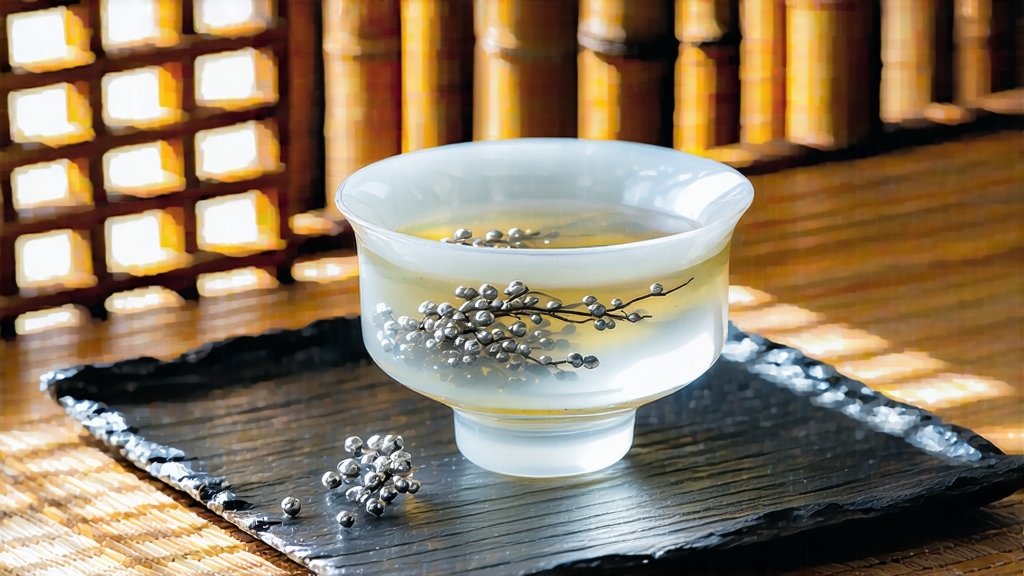
If green tea is the youthful murmur of a mountain stream and pu-erh the gravelly voice of an old monk, then Bai Hao Yin Zhen—literally “White Hair Silver Needle”—is the whispered secret of a moonlit garden. Among all Chinese white teas, none carries the same hushed reverence. International drinkers often meet White Peony first, but the moment they encounter Yin Zhen, the conversation changes: it becomes less about flavor and more about light.
History: From Imperial Tribute to Global Muse
The first written record appears in the 1796 edition of the Fuding County Gazette: “buds plucked before Qingming, spread on bamboo, sent to the capital as ‘first spring tribute’.” Court physicians praised its cooling nature, poets its “jade frost” color. By 1857, when the large-leaf Da Bai cultivar was grafted onto the wild tea forests of Taimu Mountain, Yin Zhen’s modern identity crystallized—longer, plumper buds wrapped in down so dense it looks like hoarfrost. Export began in 1891 through Fuzhou’s treaty port, carried in lead-lined chests to Europe where Victorian salons nicknamed it “China’s silver embroidery.” Today, despite global fame, only 1,200 metric tons are produced annually, half of which never leaves China, making authentic Yin Zhen rarer than top-grade dragon-well.
Micro-terroir: Where Ocean Mist Meets Granite Air
Authentic Yin Zhen comes from two micro-zones: Fuding in northeast Fujian and Zhenghe in the interior. Fuding’s east-facing slopes catch the East China Sea’s morning fog; the granite bedrock forces roots to dive deep, pulling potassium that sweetens the bud. Night temperatures drop 8 °C, condensing dew on the bud’s hairs and triggering a slow enzymatic ballet. Zhenghe, higher and more continental, gives sturdier buds with a peppery note. Purists debate which is truer; cup them side by side and you will taste oceanic salinity versus mountain thyme.
Plucking: The Dawn of One Leaf, One Bud
The rule is pitiless: only the unopened bud, 1.5–2.5 cm long, picked between the 15th of March and 5th of April before 10 a.m. while the dew is still cool. Experienced pluckers use a “twist-lift” motion that snaps the petiole without bruising; any compression oxidizes later, turning the hair gray. It takes 30,000 buds—an entire day’s work for five farmers—to yield one liang (50 g) of finished tea. When you cradle that tiny tin, you are holding five human-days of dawn.
Craft: The Art of Doing Almost Nothing
White tea’s philosophy is wu wei: action through non-action. After plucking, buds are spread on water-reed trays exactly 1.5 cm thick so air can slide underneath. For 36–48 hours they rest in a shaded pavilion whose walls are made of woven bamboo slats; workers merely open or close panels to modulate humidity. No pan-firing, no rolling—only the slow withering of moisture and grassy aldehydes. When the bud’s water content falls to 8–9 %, a charcoal “finishing bake” at 40 °C for twenty minutes halts enzymes without adding roast flavor. The result is a needle that feels weightless yet springs back when bent, its trichomes intact like frost on a winter berry.
Chemistry in Suspense
Because oxidation is arrested so late, Yin Zhen retains the highest levels of theanine (2.5 %) of any Chinese tea, alongside a unique methylated catechin—EGCG3″Me—rare outside white teas and thought to modulate histamine response. The cup therefore delivers simultaneous calm and clarity, the maritime equivalent of a meditation bell.
Grades & Names: A Lexicon of Frost
1) Imperial Needle: buds >2.2 cm, 90 % silver, harvested before the Qingming festival.
2) Beauty’s Brow: slightly shorter, 20 % pale green stem allowed, floral rather than marine.
3) Moonlight Slice: broken buds sorted out during packing, sold cheaper yet prized by chefs for infusing cream or gin.
European vendors sometimes dye inferior green-tea buds white with talc; authentic hairs cling diagonally and cannot be rubbed off without breaking the bud.
Storing Silver: Time as